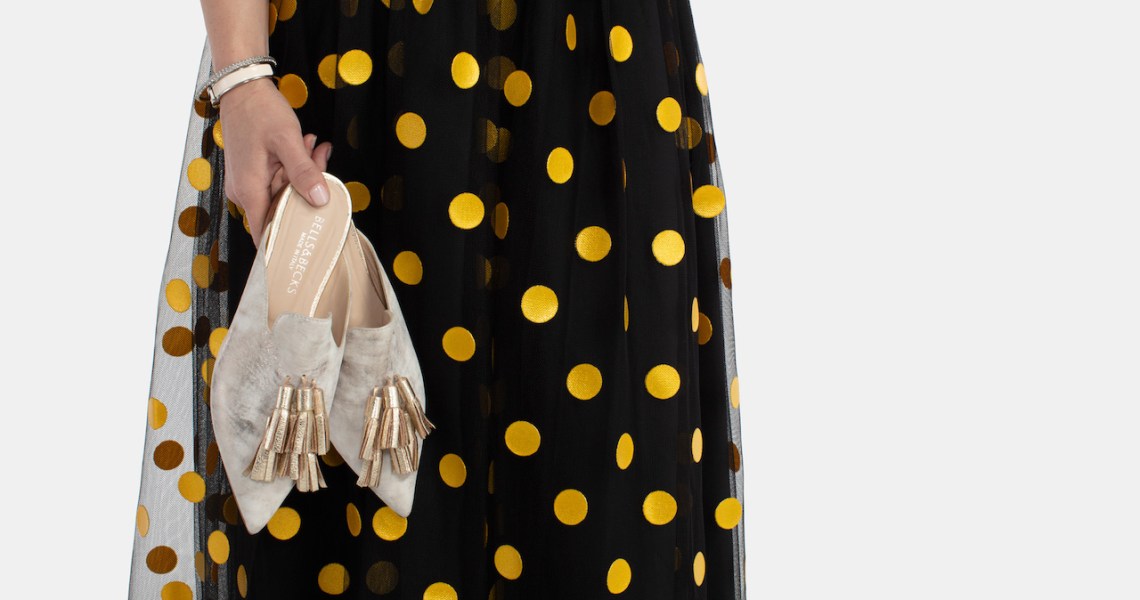Direct-to-consumer brands talk a lot about acquiring millennial and Gen-Z customers through building poppy brands on Instagram and going into multi-brand retailers like ReStore and Batch. They talk less about going after Gen X.
Tamar Miller, founder and CEO of DTC shoe company Bells & Becks and former head of merchandising for Old Navy and Banana Republic, said one of her biggest challenges since launching in June 2017 has been building an audience of Gen-X women as a DTC brand. While she said some younger customers do shop with Bells & Becks and engage with the company on Instagram, the core customer is over 40 years old and spends less time scrolling Instagram and Facebook.
“I’m building a luxury DTC brand — versus an approachable price point company — from scratch. So many buzzy [DTC] brands and businesses have built their brands through Instagram, but my target demographic, a non-millennial audience, isn’t necessarily as savvy in terms of social media,” she said. “The idea that you can build a business through Instagram isn’t the case [when you’re targeting] Gen-X customers.”
Bells & Becks hand-stitched shoes are made in Italy and range from $185 to $435. Most products are in the mid-$300 range. If Miller sold the products wholesale, she said they would be priced around $650-$800. In the last year, the company has doubled revenue from 2018, but Miller declined to share specifics.
Gen-X consumers, who are currently between the ages of 35 and 54, have an average annual household income of $101,000, per Emarketer. That number is $25,000 more than the average household income. For brands that are actively looking to win over Gen Xers, like Bells & Becks, the marketing approach tends to focus less on social media and more on a combination of IRL activations, like trunk shows, and email marketing.
“In general, shoppers belonging to Gen X are less likely than other generations to seek out new brands on social media channels,” said Laura Russell, director of strategy at Adlucent.
While Miller said she uses Facebook — 88.6% of Gen Xers are Facebook users, versus only 45.9% that are on Instagram, per Emarketer — she has found the most success by doing activations like trunk shows. In the last year, Bells & Becks averaged one trunk show a month — it’s increased the frequency toward the back half of the year based on the clear traction it was seeing with certain audiences, said Miller. So far, the company has seen the most trunk show sales in the suburbs of Chicago, New York, New Jersey, Connecticut, Texas and Virginia.
Ad position: web_incontent_pos1
Bells & Becks’ trunk shows are typically one-day events held in smaller boutique stores, like Mudpie in San Francisco. It also sells in smaller trunk shows hosted by boutiques or co-working spaces like Canopy. The brand uses targeted emails and social media posts to promote the events to locals.
For women’s apparel company M.M. LaFleur — which sells to customers between the ages of 25 and 55-plus, but sees most of its high-value customers between the ages of 36 and 45 — email plays a big part in how the company connects with customers. Currently the company has roughly 750,000 email subscribers. The brand offers 15% off to new customers making their first online order from M.M. LaFleur. Like many DTC brands, customers must first enter an email address to receive the discount.
“Email marketing is the most likely channel for swaying Gen Xers,” said Russell. “They prefer authentic communication instead of marketing jargon.”
Bells & Becks also uses some email marketing to connect with older customers. It takes a very specific approach to the tone of voice in any written communication, whether on email or, less frequently, Instagram. Miller said she wants customers to know this brand, although DTC, is a luxury product.
“We tend to use words such as ‘luxury,’ ‘sophisticated,’ ‘polish,’ ‘good taste’ and we use the words ‘woman’ and ‘feminine’ most frequently when speaking to and about our customer. We don’t speak to ‘badasssery’ — there’s a type of language that gets used to describe a certain irreverence — and we don’t describe our shoes as ‘ah-mazing,’ or at least we try to steer clear of this type of language,” Miller said.




